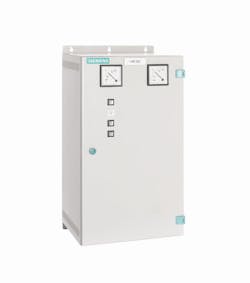Innovations in Traction Power
Railway traction continues to develop as transit moves towards more environmentally friendly and progressive networks. As the number of electrified rail lines increase, companies have advanced the development of systems — including voltage, breaking and frequency.
With the implementation of a traction system, it needs to be taken into consideration that the trains need access to the power supply at all times. This calls into consideration the idea for agencies to consider both the environmental and developmental impact. Choosing between direct current (DC) or alternating current (AC) is another consideration that comes into call when determining how long the rail line is and the available funds.
Improving lifespan
Siemens has been serving customers in cities across North America for more than 30 years providing solutions, systems, and products for traction power supply, contact lines and network control technology. Siemens has decades of experience in the construction and commissioning of individual systems, and provides most services from a single source, thus generating valuable synergies and unique savings potential.
Andreas Thon, vice president of Siemens Turnkey Projects and Electrification business in the U.S., said, “With public transportation and light rail becoming more popular than ever, agencies are looking for technologies that will ensure smooth and reliable deployment. Most of today’s transportation infrastructure still needs to rely on mission-critical electrification technologies – and while these technologies may not be always be noticeable to a rider, their impact is very real: A good traction power system increases the lifespan of vehicles and improves the rider experience with smoother, more consistent and reliable rides.
Siemens offers traction power supply systems under the Sitras brand, including substations for DC and AC, autotransformer stations, frequency converters, reactive power compensators and active balancers. The program covers the most common DC voltages and various AC voltages and frequencies. The six systems together represent about 95 percent of the global market. They consist of tried and tested standard products from the power supply sector to special Sitras products which ensure high availability and have low lifecycle costs. The Sitras products feature protection controllers that can reduce high viltage and protect units;
- The Sitras PRO combined DC protective unit and controller is used in the power supply for DC railways in mass transit and main-line systems up to 3,000 V DC.
- The Sitras SCD-C reduces excessively high voltages by reliably short-circuiting the return circuit and structure earth temporarily. Furthermore, the formation of stray currents is minimized by automatic opening of the shortcircuiting device.
- Sitras SCD reduces excessively high voltages by reliably short-circuiting the return circuit and structure earth temporarily. Furthermore, the formation of stray currents is minimized by automatic opening of the short-circuiting device.
“Importantly, today’s agencies are looking to ensure utmost efficiencies with their existing electrification systems — both for optimum operations and reduced environmental impact. We’ve also noticed many agencies interested in how traction power provides further efficiencies by supporting exciting new technologies like regenerative braking — such as what we’ve helped do in Portland with TriMet," said Thon.
Flexible design
ABB’s traction systems that are aimed for for metro and light rail vehicles are designed to support clean and safe railway networks in cities.
ABB works with agencies to provided a variety of applications for light rail vehicles — and related rail vehicles including streetcars, trolleys, light-metros and trams. ABB's applications include components include aspects such as traction converters, auxiliary converters, train control and monitoring systems (TCMS) and traction motors.
Some of the benefits that ABB offers its customers is an improved energy efficiency, a reduction in operating costs and an optimum sizing of components. ABB's offering of DC traction supply can be utilized by installation in either the overhead line or in a grid connection beneath the rail. The DC traction voltage is rolled out in three phases and is applied in such a way to accommodate the traction. The ENVILINE set of products was designed to both accommodate energy storage and breaking energy recuperation.
For agencies that look to the overhead forms of traction ABB offers traction transformers. The transformers are beneficial to both the performance and operation of the railway vehicle. ABB's traction transformers are utilized within all forms of railway transport, designed in different sizes and weights to best accommodate each agencies vehicle size and power. T
